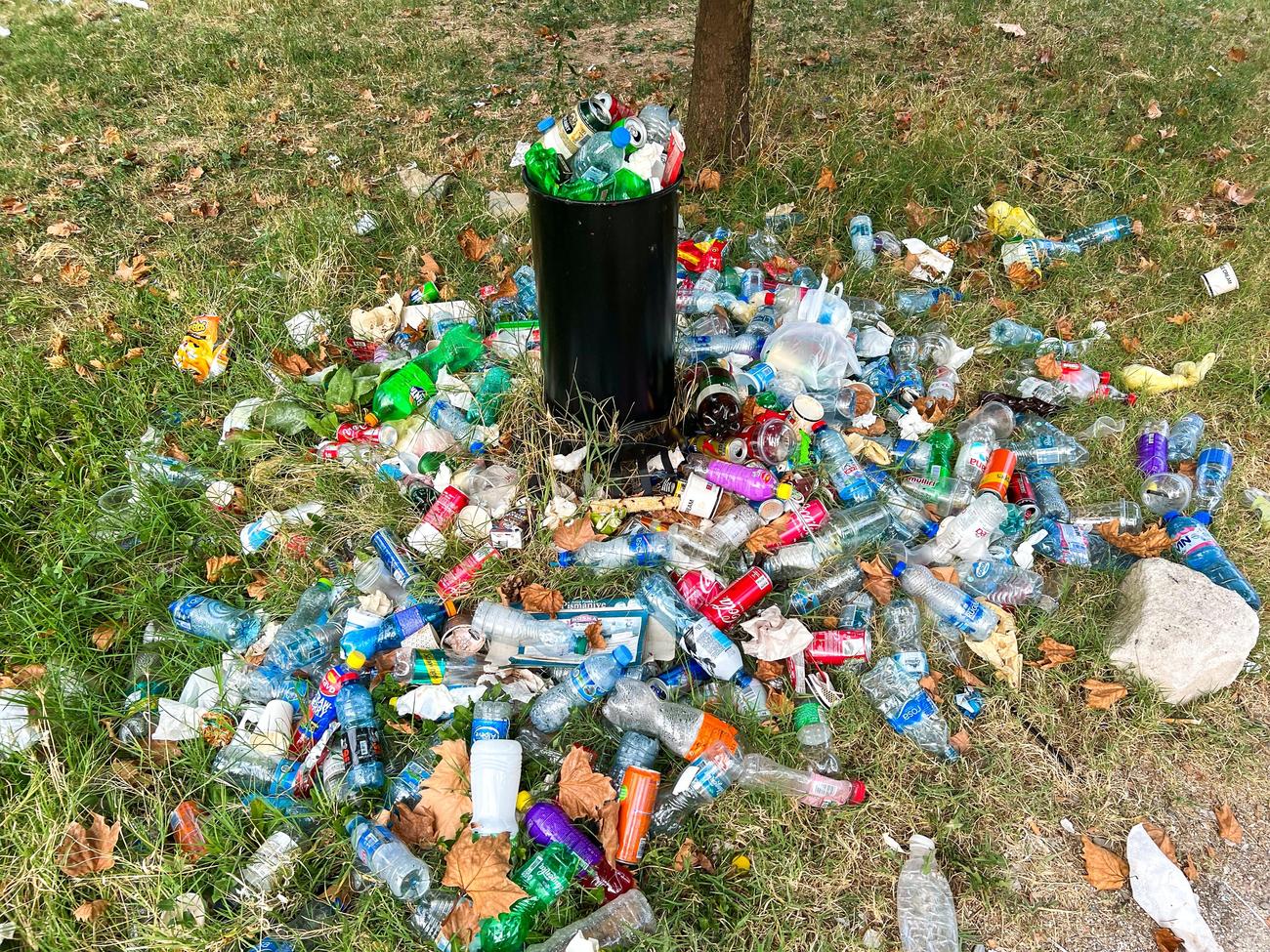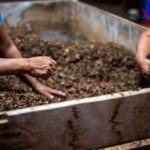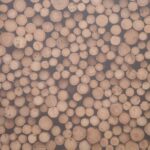Are you ready to unlock the power of composting and make a meaningful impact on our planet? Look no further! In this ultimate guide, we delve into the world of compost bins and provide you with expert tips to embark on a journey towards a healthier and more sustainable future. Composting is not only a simple and effective way to reduce waste, but it also enriches the soil, promotes biodiversity, and mitigates climate change. So, whether you’re a seasoned green thumb or just starting out, get ready to discover the wonders of composting and how to maximize the potential of your very own compost bin.

Compost Bin
Composting is a simple yet impactful way to reduce waste and promote a healthier planet. And one essential tool for successful composting is a compost bin. Whether you have a small backyard or a spacious garden, a compost bin can help you turn organic waste into nutrient-rich compost that can nourish your plants and soil. In this article, we’ll explore everything you need to know about compost bins and how to choose the right one for your needs.
Why Use a Compost Bin?
You might be wondering, why bother with a compost bin when you can just create a compost pile or heap in your yard? Well, while it’s true that the decomposition process can occur without a container, using a compost bin offers several advantages.
First, a compost bin helps contain your compost and keeps it neat and organized. It reduces the chances of your compost spreading all over your yard and creates a designated space for the decomposing materials. Plus, a bin can help keep pests and critters away from your compost, especially if you choose the right kind.
Second, using a compost bin ensures that the composting process happens more efficiently. Bins provide the ideal conditions for proper aeration and moisture control, which are crucial for the breakdown of organic matter into nutrient-rich compost.
Choosing the Right Compost Bin
When it comes to choosing a compost bin, the options are vast and diverse. The right choice for you depends on various factors, including the size of your plot, the design of your garden, and the amount of compost you want to produce. Let’s explore some popular options:
Tumblers or Rotating Bins: These bins allow you to easily turn and aerate your compost. They are a great choice if you have limited space or want to speed up the decomposition process. Tumblers are especially convenient for urban dwellers or those with small gardens.
Enclosed Bins: These bins come with a lid to keep out pests and control moisture levels. They are more suitable for larger gardens or outdoor spaces where you have more room to accommodate a larger bin.
DIY Bins: If you’re feeling crafty and want to save some money, you can always create your own compost bin using materials such as wooden pallets, wire mesh, or even old garbage cans. DIY bins offer flexibility in size and design and can be customized to fit your space and composting needs.
Remember, regardless of the type of bin you choose, it’s important to ensure proper ventilation, drainage, and access for turning the compost.
Quote: “Choosing the right compost bin is like finding a perfect fit for your gardening needs. It’s about finding the one that suits your space, your composting goals, and your lifestyle.”
Getting Started with Your Compost Bin
Now that you have chosen the perfect compost bin for your needs, let’s dive into how to get started with composting. Follow these simple steps:
Select a Location: Place your compost bin in a convenient location, preferably on level ground. Consider proximity to your kitchen for easy access to food scraps, as well as sunlight and drainage.
Layer It Up: Start by adding a layer of brown materials, such as dry leaves, straw, or shredded paper, to the bottom of your bin. This provides a carbon-rich foundation for your compost.
Add Green Materials: Layer green materials, such as kitchen scraps and fresh grass clippings, on top of the brown layer. Green materials provide nitrogen, an essential component for the decomposition process.
Keep It Moist: Ensure your compost stays moist, similar to a wrung-out sponge. Add water when necessary, especially during dry spells. But be careful not to drown your compost!
Turn and Mix: Every few weeks, use a pitchfork or shovel to turn and mix the compost. This helps aerate the pile and speeds up the decomposition process.
Be Patient: Composting takes time, so be patient. Depending on the conditions and materials used, it can take anywhere from a few months to a year for your compost to fully mature.
Quote: “Composting is like conducting a symphony in your own backyard. You are the conductor, and your compost bin is your orchestra. Each ingredient plays a vital role in creating the harmony of nutrient-rich compost.”
Troubleshooting Common Issues
Composting is a natural process, but it’s not without its challenges. Here are some common issues you might encounter with your compost bin and how to overcome them:
Odors: If your compost bin starts to smell unpleasant, it’s a sign that your compost is either too wet or lacks proper aeration. To solve this issue, add more dry materials like leaves or shredded paper to absorb excess moisture. Additionally, ensure the compost is regularly turned to improve airflow.
Pests: If critters like rats or raccoons are attracted to your compost bin, it’s essential to take action to prevent infestations. Avoid adding meat, dairy, or oily foods to your compost, as they can attract these unwanted visitors. To further deter pests, consider adding a layer of wire mesh or hardware cloth to the bottom of your compost bin.
Slow Decomposition: If your compost is taking longer than expected to decompose, it might be lacking the right balance of green and brown materials. Ensure you have a good mix of nitrogen-rich green materials and carbon-rich brown materials. Also, make sure you’re turning and mixing your compost regularly to maintain proper aeration.
Maximizing the Potential of Your Compost Bin
To make the most of your compost bin and create nutrient-rich compost, there are a few additional tips to keep in mind:
Know What to Compost: While many organic materials can be composted, not everything is suitable. Avoid adding meat, fish, dairy products, oils, or pet waste to your compost bin, as they can attract pests or introduce harmful pathogens. Stick to fruit and vegetable scraps, coffee grounds, tea leaves, yard trimmings, and shredded paper.
Size Matters: Consider the size of your compost bin in relation to your composting needs. If you have a large garden or generate a significant amount of organic waste, a bigger bin or multiple bins might be necessary to accommodate your composting goals.
Storage and Use: Once your compost is ready, store it in a separate container or directly incorporate it into your garden or potted plants. Compost can be used as a soil amendment, mulch, or as a top dressing to nourish your plants.
By incorporating these tips and techniques, you can maximize the potential of your compost bin and contribute to a healthier planet by reducing waste and enriching your gardens with nutrient-rich compost.
Quote: “Your compost bin is like a window into the marvelous world of nature’s recycling system. By turning waste into valuable compost, you become a steward of the environment, fostering a cycle of renewal and sustainability.”
Composting is an amazing natural process that turns organic waste into nutrient-rich soil. If you’re curious about the benefits and facts about composting, click here to discover some interesting insights. Get ready to be amazed by the wonders of composting!
Compost Bin
Are you curious about the benefits of composting? Discover how a compost bin can benefit not only your garden but also the environment. By diverting organic waste from landfills, composting greatly reduces greenhouse gas emissions. Furthermore, composting enriches the soil, promoting healthier plant growth and reducing the need for chemical fertilizers. Explore the various types of compost bins available and find the perfect one for your needs. Click here to learn more about compost bin benefits: compost bin benefits.
Looking to start composting but unsure where to begin? There are different types of compost bins to suit every space and preference. From traditional compost tumblers to worm bins, there’s an option that will fit your needs. Not only do compost bins make composting easier, but they also help keep pests out and odors in check. Discover the various types of compost bins and find the perfect one for your home. Click here to explore compost bin types: compost bin types.
With the enticing benefits of composting and a wide array of compost bin options, there’s no reason not to start composting today. By making the conscious choice to compost, you can contribute to a greener and more sustainable future. So don’t wait any longer, click on the links above and embark on your composting journey. Your garden and the environment will thank you!
How to Build an Easy DIY Compost Bin
[youtube v=”4t59BrzTpJg”]
Composting is a simple and effective way to recycle garden scraps, food scraps, and other organic matter. By building your own compost bin, you can easily create a system to turn these materials into nutrient-rich compost for your garden. In this article, we will guide you through the process of building a DIY compost bin using simple tools.
Location and Design
When choosing the location for your compost bin, it is important to consider accessibility and convenience. The bin should be placed near your garden or close to where you generate the most organic waste. You should also ensure that it is not directly against a wall to prevent moisture from accumulating and causing the wood to rot.
Materials and Construction
To build the compost bin, you will need some basic materials such as two-by-fours for the verticals and one-by-sixes for the slats. The design involves creating panels with two-by-fours and two-by-sixes, which are then attached with screws to form the sides of the bin. These slats have small gaps between them to allow for airflow. Low-profile cabinet screws are recommended to prevent wood splitting and provide structural stability.
Building the Panels
The construction process involves building panels by attaching the slats to the two-by-fours and two-by-sixes. Each panel is then duplicated to create the walls of the compost bin. The back panel is built separately and consists of one-by-sixes laid across and supported by a two-by-four at the bottom for added stability.
Assembling the Bin
Once all the panels are built and prepared, it is time to assemble the compost bin. The panels are stitched together by flipping them on their faces and attaching the back panel. This creates a rigid structure for the bin. After leveling out the bin and ensuring its stability, front panels are added to prevent compost materials from flying out.
Completing the Compost Bin
To complete the compost bin, one-by-six panels are dropped into channels created by two-by-twos. These panels not only provide easy access to the compost but also help maintain the rigidity of the structure. With the panels in place, the compost bin is ready for use.
This DIY compost bin is a cost-effective and flexible solution for recycling organic waste and creating nutrient-rich compost. It is a simple project that can be built using readily available materials. Stay tuned for upcoming upgrades to the bin and a video tutorial on how to build your first compost pile. Happy composting!
“Composting is a simple and effective way to recycle organic waste, and by building your own DIY compost bin, you can easily create nutrient-rich compost for your garden.”
FAQ
Question: What is a compost bin?
Answer: A compost bin is a container that is used to turn organic waste into compost over time. It provides a contained environment for the decomposition process to occur, resulting in nutrient-rich compost that can be used in gardens and plant beds.
Question: Can composting be done without a compost bin?
Answer: Yes, the decomposition process can take place in a compost pile or heap even without a container. However, using a compost bin offers several advantages such as containing the compost, preventing pests and odor issues, and making the process more organized and manageable.
Question: What should I consider when choosing a compost bin?
Answer: When choosing a compost bin, it is important to consider factors such as the size of your plot, the design of your garden, and the amount of compost you want to produce. Almost any container or material can be used to make a compost container. The best compost bins are stylish, user-friendly, easy to clean, and block odors.
Question: What food scraps can I compost?
Answer: Not all food scraps qualify as good composting material, as some items can attract wild animals and pests. You can compost fruit and vegetable scraps, coffee grounds, tea leaves, eggshells, and yard waste such as grass clippings and leaves. However, avoid composting meat, dairy products, oily foods, and pet waste as they can cause odor issues and attract unwanted critters.
Question: Can composting attract rats?
Answer: Composting can attract rats if certain critters are not kept away. Rats are attracted to the rich organic material in compost bins, and they can carry diseases. To prevent rat invasions, make sure the compost bin is secure and does not have any openings that allow rats to access it. Avoid adding oily food scraps and meat to the compost as they are more likely to attract rats.
- Master Russian Politeness:A Guide to Saying Please - March 29, 2025
- Master Russian Politeness:Say Please Like a Pro - March 29, 2025
- Mastering King in French: A Deep Dive - March 29, 2025
















